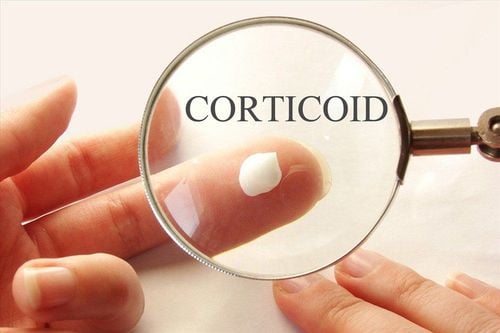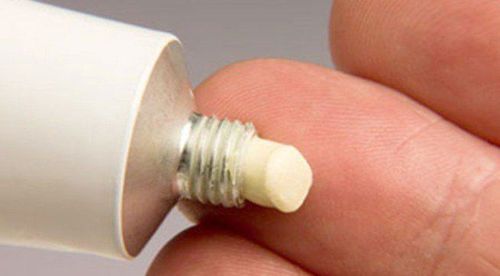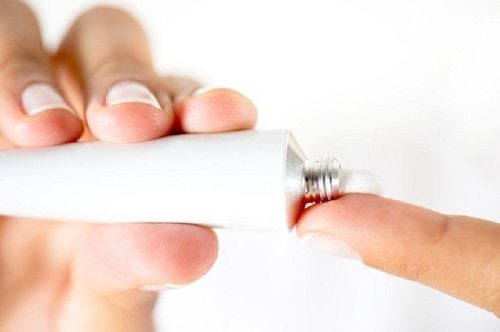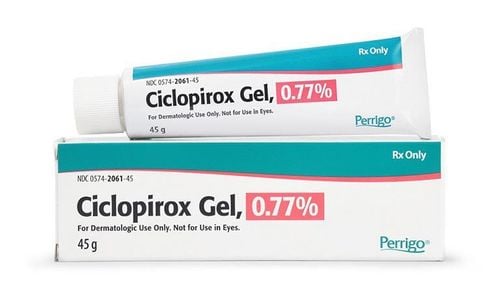This is an automatically translated article.
The article was consulted with Specialist Doctor I Le Thi Thu Hang - Dermatologist - Department of Medical Examination & Internal Medicine - Vinmec Hai Phong International General Hospital.Although there are millions of species of fungi, only about 300 species of fungi can actually cause infections in humans, and of those, several types of fungal infections can affect your skin. In this article, we'll take a closer look at some of the more common fungal skin diseases, and how to treat and prevent them.
1. What is a fungal skin infection?
A fungal infection, also known as a fungal infection, is a skin disease caused by a fungus. Fungi live everywhere, they can be found in plants, soil, and even on your skin. These microscopic organisms usually don't cause any problems, unless they multiply faster than normal or get inside the skin through a cut or injury.Because the fungus thrives in warm, humid environments, ringworm infections often appear in moist or sweaty areas, such as the feet, groin, and skin folds. Usually, these infections present as a scaly rash, discolored skin, and often cause itching.
Ringworm is usually spread by direct contact, including contact with the fungus on clothing or other items, or possibly contact with infected people or animals.
Although tinea versicolor is common, frequent, and can be uncomfortable, it's usually not serious. Fungal skin diseases are easy to recur, spread quickly, and cause itching. In immunocompetent healthy individuals, superficial fungal strains that normally cause disease only on the skin can be cured with antifungal antibiotics and hygienic measures.
2. Some Common Skin Infections
Many common fungal infections of the skin can affect your skin. Other common areas of fungal infection are mucous membranes, for example vaginal and oral thrush. Below, are some of the most common types of fungal infections that can affect the skin.2.1 Ringworm (skin corporis) Ringworm is caused by a fungus. The common location is the closed skin, often wet such as groin, buttocks ... then can spread to the whole body. In particular, the disease can be widespread and difficult to treat when the patient self-applies corticosteroids. For workers in hot, humid environments who often sweat, such as drivers, athletes, builders, etc., the disease is often easy to recur.
The main symptom of ringworm is a ring-shaped rash, many arcs, the center of the lesion is healthy skin, at the edge of the lesion there are often scabs, red skin and blisters. The rash can be widespread and is often itchy.
Ringworm is one of the most common and highly contagious fungal skin infections. However, the disease is not serious and can be treated with antifungal medications. Treatment usually includes antifungal medications applied to the skin. You can use an over-the-counter cream such as: Clotrimazole (Lotrimin, Mycelex). Miconazole (Micatin, Monistat-Derm). Terbinafine (Lamisil). In more severe cases, prescription medication that can be applied topically or taken by mouth may be necessary.

In some cases, the fungus can spread to other areas of the body such as the nails, groin or hands. Common types of foot fungus include:
Interdigital: This is called an infection between the toes. Most people with tinea pedis have this form. It usually occurs between your two smallest toes. The infection can spread to the soles of the feet. Moccasin: This form can start with irritation, dryness, itching, or scaly skin. Over time, the skin can thicken and crack. This infection covers the entire sole of the foot and spreads to the sides of the foot. Granular: This is the rarest type of foot fungus, it usually begins with a sudden outbreak of fluid-filled blisters on the bottom of the foot. They can also appear between the toes, on the heel, or on the top of the foot. To treat foot fungus, your doctor may give you an antifungal medication that you apply on the skin or, in severe cases, prescribe an antifungal medication to take by mouth.
2.3 Jock Itch (Tinea Cruris) Jock itch is a fungal skin infection of the groin and thigh areas. The main symptom is a red, itchy rash that usually begins in the groin area or around the inner thighs. The rash can get worse when you exercise or do physical activities that produce a lot of sweat, making the skin of the groin and buttocks often wet, the disease can spread to the buttocks and abdomen. Affected skin may appear red, healed in the center, with many arcs, scaly margins, and vesicles.
To treat Jock Itch, you must keep the affected area clean and dry. Over-the-counter antifungal medications can treat most of these itching. In severe cases, your doctor may have to prescribe you a topical cream. No matter what treatment you're getting, make sure to wash and dry the itchy area with a clean towel and use an antifungal as directed. Change clothes, especially underwear, every day.
2.4 Tinea capitis This fungal infection affects the scalp and hair shafts. It is most common in young children and should be treated with prescription oral medications and antifungal shampoos. Symptoms may include the appearance of local bald patches, which may be scaly or red, scaly and itchy skin, painful sensations in the fungal patches
2.5 Ringworm Vitiligo is an infection yeast infection causes small oval discolored patches to develop on the skin. It is caused by an overgrowth of a specific fungus called Malassezia, which is naturally present on the skin of about 90% of adults. These discolored patches of skin most commonly appear on the back, chest, and upper arms. The patches of tinea versicolor look lighter or darker than the rest of the skin and can be red, pink, tan, or brown in color. These patches are often itchy, flaky, or scaly. Ringworm is more common in the summer or in warm, humid areas. In particular, vitiligo can return after treatment.
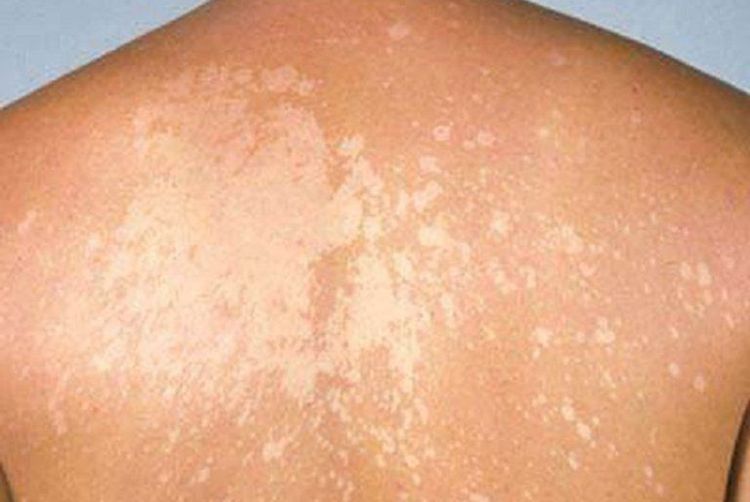
2.7 Onychomycosis (dermatomycosis unguium) Onychomycosis is a fungal infection of the nails. It can affect fingernails or toenails, although nail infections are more common. Symptoms of the disease include discoloration of the skin, usually yellow, brown or white, and thickening of brittle or brittle nails. Prescription medications are often required to treat this type of infection. In severe cases, your doctor may remove part or all of the affected nail.
3. Risk of causing fungal skin disease
There are a number of factors that can put you at increased risk of skin infections, including:Living in a humid environment Sweating a lot Perspiration unclean and dry skin Sharing items such as clothing, shoes , Bath Towels. Wearing tight clothing or wearing shoes that are not breathable Participating in frequent skin-to-skin contact activities Contact with animals that may be infected Have a weakened immune system due to taking immunosuppressive drugs, treatment cancer or diseases like HIV. Many types of skin infections can be controlled with over-the-counter (OTC) fungal treatments. However, contact your doctor if you have any of the following:
A fungal skin infection that does not improve, gets worse, or recurs after OTC treatment Patches of hair loss with itching or scaly skin Suspected fungal infection Impaired immune system function You have diabetes and suspect you may have a fungal infection.

4. Treatment of skin fungus
Antifungal drugs work to treat fungal infections. They can kill fungi directly or prevent them from growing and re-growing. Antifungal medications are available as over-the-counter (OTC) or prescription medications, including:Creams or ointments Powders Sprays Shampoos If you suspect you have a fungal skin infection, you may want to try a product. OTC products to see if they help improve the condition. In more persistent or severe cases, your doctor may prescribe stronger antifungal medications to help treat the infection.
In addition to taking OTC medications or prescription antifungals, there are a number of home remedies you can use to get rid of a fungal infection, including keeping the affected area clean and dry. Wear loose-fitting clothes or shoes that let your skin breathe.
5. Prevention of fungal skin disease
Try to keep these tips in mind to help prevent skin infections:Ensure good hygiene practices. Use separate personal items such as clothes, towels. Wear clean clothes every day, especially socks and underwear. Choose breathable clothing and shoes. Avoid wearing clothes or shoes that are too tight. Be sure to dry your body properly with a clean, dry towel after bathing or swimming. Wear slippers or flip flops in the changing room instead of going barefoot. Wipe down shared surfaces like gym equipment or carpets. Stay away from animals showing signs of fungal infection. Fungal skin infections are common, and although these infections are usually not serious, they can cause discomfort and irritation due to itching or red, scaly skin. If left untreated, the rash may spread or become more bothersome. There are many types of OTC products that help treat fungal skin infections. However, if you have an infection that doesn't improve after taking an OTC medication, see your doctor as you may need a prescription to make it more effective.
Vinmec International General Hospital is a reliable address in the diagnosis, treatment, prevention and rehabilitation of dermatological diseases. The hospital has very effective and successful treatment for common diseases in dermatology such as: skin fungus, melasma, freckles, acne / scars / stretch marks, dermatitis, allergies / irritation, color diseases skin pigmentation, skin aging, syphilis, warts, benign tumors in the skin, fleshy nails, moles.... The examination is always performed by a team of highly qualified doctors in combination with modern equipment. Therefore, customers can completely trust the quality of medical services at Vinmec.
Please dial HOTLINE for more information or register for an appointment HERE. Download MyVinmec app to make appointments faster and to manage your bookings easily.
Reference source: webmd.com - healthline.com




